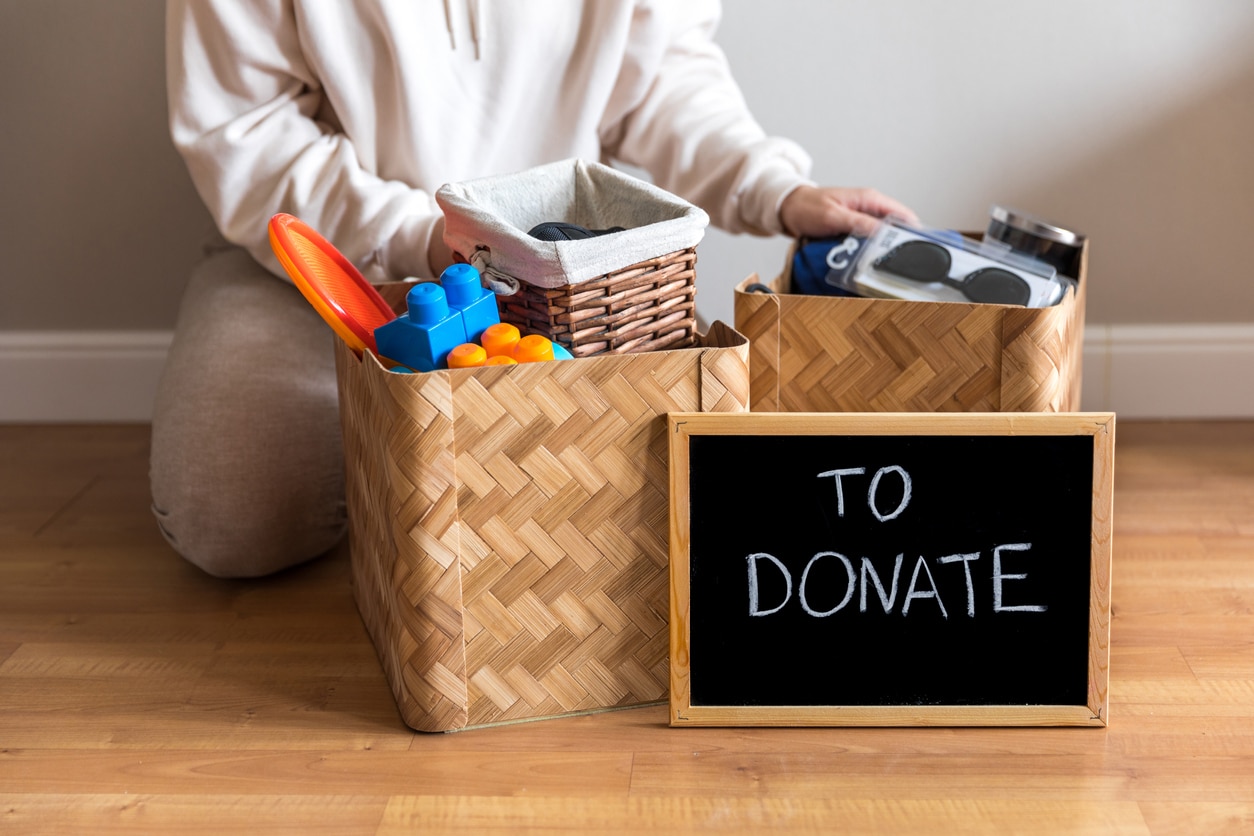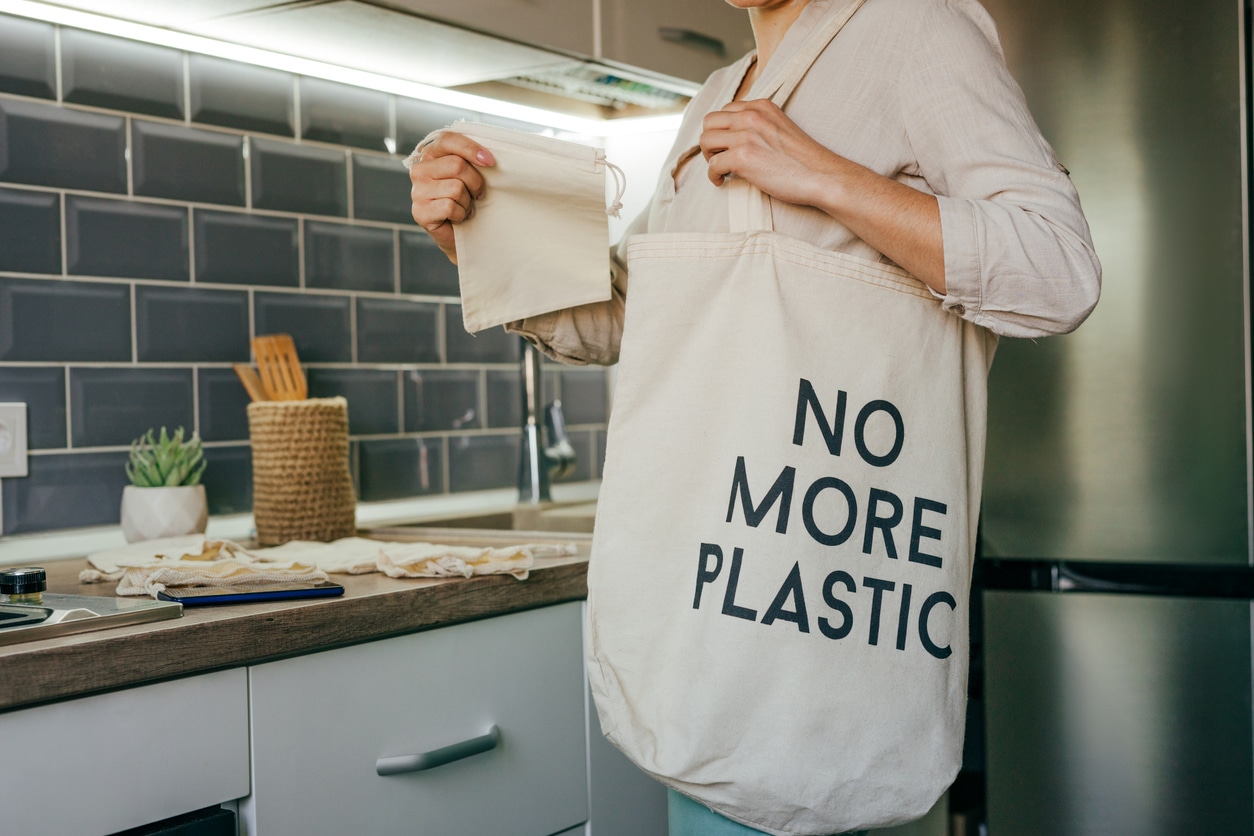
Sustainable Decluttering: 10 Tips to Live Your Best Life and Help the Earth
Since Marie Kondo’s Life-Changing Magic of Tidying Up hit the scene, people worldwide have enthusiastically jumped on board the minimalism and decluttering train. Households are purging their stuff like never before, letting go of years worth of knick-knacks, old food, expired cleaning products and ill-fitting clothes.
For those concerned with living sustainably, the thought of adding items to overfull landfills is unthinkable. If these feelings are keeping you from decluttering your home, and finding the peace a more minimal environment provides, there are ways to marry simplifying your space and reducing your impact on the planet.
The Hidden Costs of Mainstream Decluttering
The world produces around 2 billion tons of solid waste annually, which is expected to grow to 3.5 billion by 2050. Unfortunately, the popularity of decluttering only adds to the staggering statistics. For example, the average American tosses 82 pounds of clothing each year. Each item decluttered unsustainably is destined for the dump.
To make matters worse, many people are in a vicious cycle. The hormone rush of decluttering can become as addicting as buying new things. Instead of doing a massive purge one time and letting it become a lesson, some continue to buy unnecessarily, knowing they can just declutter later.
Benefits of Sustainable Decluttering
Switching to a sustainable model of decluttering instead of popular modes — like throwing everything out in giant black, plastic garbage bags or sending everything to the thrift store — is beneficial in many ways. The advantages are threefold, helping you, others and the environment.
Improves Physical and Mental Health
Living in a cluttered home isn’t ideal for anyone. Dealing with the everyday realities of a messy house increases your stress hormone cortisol, distracts you and makes it challenging to find what you need when necessary. When your stress levels are consistently high, you’re also more likely to turn to negative coping mechanisms like overeating, which significantly impact your physical health.
Helps Others
When you sustainably rid yourself of unwanted items, you give back to those around you. Donating to thrift stores or shelters helps those in need. Selling unwanted items, or listing them for free, ensures they end up with someone who will appreciate them. Recycling lets companies use your unwanted stuff to make new items for others in a greener way.
Reduces Environmental Impact
Letting go of your possessions more responsibly positively impacts the planet. The most obvious benefit of sustainable decluttering is the reduction in materials traveling to, and sitting in, landfills. You’ll waste less energy over each item’s life cycle. You’ll also keep potentially hazardous runoff from entering waterways. Fewer new items in landfills contribute less to greenhouse gas emissions, as well.
Ways to Declutter Sustainably
What does sustainable decluttering look like and how can you let it change your habits? These tips will set you up for success.
1. Skip Garbage Bags
The typical resting place for unwanted stuff is a garbage bag, where it heads to the side of the road, dumpster or a thrift store. These black bags are handy but a waste of plastic material. They add to your contribution to landfills.
To reduce your impact, choose more sustainable containers like the stack of used boxes you likely have lying around or grocery bags. You’d be extending the use of the packaging and your donations.
2. Use Organization You Have on Hand
As you declutter, you’re going to want to tidy your possessions in a more sensical manner. Heading to the Container Store or Target for drawers and do-dads will add to environmental issues, using more plastic and creating unnecessary waste when you decide to organize differently down the road.
The best thing you can do is use the containers you already have. Boxes, rubber bands and storage containers from previous organization attempts can all work in a pinch. Consider the space you’re organizing when selecting which containers to use. Garage supplies can be hung on racks, stored on shelves or kept in existing bins to keep out pests and natural elements. Out-of-sight spots like closets and cabinets are fine to use old boxes in. Organizing in plain sight is a job for decorative baskets and bins.
Live in your space for a while and carefully consider your needs. What would add functionality and what would just make it more Pinterest-worthy? If you want to do your part for the planet, only add organizational elements that improve daily use significantly. Otherwise, leave the beautifully curated organizers on the store shelves.
3. Donate to Thrift Stores Selectively
Decluttering’s popularity over the last several years has thrift stores drowning in unsellable junk. Thirty Goodwill locations in Maine, New Hampshire and Vermont spent a whopping $1.2 million for disposal services. The costs are more than monetary — rather than getting appropriately recycled, repaired or given new life with a new owner, they contribute to landfills. Transportation of all those items also adds to greenhouse gas emissions.
Do your part by only donating sellable stuff and things you know your local thrift store accepts. Otherwise, you’re doing yourself, the store and the environment a disservice.
4. Find Good Homes
Getting rid of your possessions can be tough. You form a mental attachment to certain trinkets and clothing. You may misguidedly donate your treasures to a thrift store, imagining the perfect person finding them and giving them as much love as you did once. Unfortunately, that’s not usually the case. Donated items sometimes get lost or broken before they find a new home.
Skip the thrift store altogether if you can find someone in your circle who would love your items. Old baby clothes could go to a new mom in your neighborhood. Your childhood dollhouse might find new love at a local shelter. Before tossing things in the donation box, consider if you know someone who could benefit from it.
5. Sell What You Can
If you don’t know anyone who would love your cast-offs, try selling them on your own before donating to a thrift store. Host an old-fashioned garage sale so the community can repurpose your unwanted items. Another option is to list your items on platforms like Facebook Marketplace, Nextdoor or Craigslist. You can also try local buy-and-sell groups.
6. Use the Power of Free
Some items may not be worth any money. Most people’s next step would be to toss it in the trash, but you still have other options if you want to declutter sustainably. The first is to entice new owners with the power of free. You wouldn’t believe how quickly your goods will disappear if you place them by the road with a “free” sign. Similarly, you can list things for free on Facebook or apps like Freecycle.
7. Give Old Items New Life
People who take free items are generally willing to spend extra time repairing or repurposing your “trash.” Under their attention, ripped or stained clothing becomes like new. Broken furniture is useable again or becomes something entirely different.
You can let other people give your products a second chance, or you can repurpose and repair yourself. Most repairs are straightforward and quick — you just need to block time to do it.
Reusing is even easier. For example, cutting clothing beyond repair into cloths for cleaning is simple. Transforming an old desk into a garden planter could add a new look to your yard.
8. Dispose Responsibly
Once you’ve exhausted all those options, your next step is to dispose of unwanted items sustainably. You’d be surprised how many things can be recycled if you look in the right places. A quick internet search will connect you with locations or businesses where old movies, furniture, mattresses, electronics, hazardous materials and more can be recycled.
9. Buy Quality from the Start
The most important part of sustainable decluttering is letting it influence your habits. Now you’ve seen how long it takes to find something a new home responsibly. You’ve also witnessed the sheer amount of clutter you collected and its effect on your health.
Start by buying quality goods from now on. Save up to purchase one piece that will last you years over several low-quality items. Source from sustainable brands prioritizing conserving resources and planning for their products’ entire life.
10. Find Ways Around Buying New
Although there’s sometimes no way around it, avoiding buying new items is the best way to help the environment. Every purchase comes with more than a monetary cost, contributing to greenhouse gasses and eventually adding to landfills.
One great option to avoid buying new is sharing purchases with family, friends or neighbors. Do you need constant access to a chainsaw, or could you cut costs and environmental impact by splitting one between you and your closest neighbors?
Another idea is to buy secondhand. You’ll save a lot of money and be more eco-friendly by purchasing everything from your books to exercise equipment pre-loved.
Change Your Lifestyle
While switching to a sustainable decluttering system makes a difference on the planet, you’ll do more good by adjusting your everyday habits. These little changes add up to a significant environmental impact over time.




Post a comment